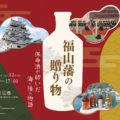東北の地理的表示
TOHOKU GEOGRAPHICAL INDICATION
The following is a part of 48 Japanese GI products that are protected in the EU.(as of September 2020).
日本の GI 産品のうち、EU 内で保護される日本の GI48 品をご紹介します。(2020年9月現在 )
AOMORI CASSIS
あおもりカシス

AOMORI CASSIS is a variety introduced from Germany in 1965. It has small fruits with thick skin, sweetness and bitterness with acidity, and contains many anthocyanins. Aomori Cassis is a variety introduced before certain improvements were made overseas, so it is thought to be close to the appearance and taste of the original cassis because the fruit is small in size, has thick skin, and has both sweetness and bitterness with some sourness. It can be said that
this variety is suitable for processing, such as sweetening or combining with dairy products, making full use of its refreshing acidity and unique fragrance.
1965年にドイツから導入された品種で、小粒で皮が厚く、酸味とともに甘み・苦味を有し、他のカシスに比べ、アントシアニンという成分を特に多く含んでいます。海外で品種改良が進む前に導入された品種であるため、自然(原種)のカシスの姿や食味に近いと考えられ、さわやかな酸味や独特の芳香が特徴で、この自然の酸味を活かして、甘みを付けたり、乳製品と合わせると相性が非常に良く、加工に適した品種と言えます。
JUSANKOSAN YAMATO SHIJIMI
十三湖産大和しじみ

Yamato Shijimi is cultivated in Lake Jusanko in Aomori Prefecture. This lake has excellent environmental conditions for producing the mussels when it comes to the presence of salt, dissolved oxygen, sediment, and spawning. In addition to making an excellent soup stock, because of their savoury flavour and their overall high quality they are exported throughout the year, giving this particular product an excellent reputation. A particularly good season for Shijimi is between July and August, their spawning period, during which they become large and produce a rich stock. Between December and March their bodies constrict and tighten up, intensifying their savoury flavour, at which time they are marketed under the name “Kanshijimi.”

塩分、溶存酸素量、底質、産卵条件といったしじみの生育環境が全国的に特に優れた青森県の十三湖において育まれたヤマトシジミです。しじみの出汁や旨味がよく出ており、品質が高いことに加え、一年間を通して安定的に出荷されていることから、市場で高く評価されています。特に7月、8月は、産卵期を迎えて、身が大きく、濃厚な出汁が出るようになり、しじみの旬になります。また、冬場の12月、翌年1月から3月にかけては、身が引き締まって旨味が凝縮されており、「寒しじみ」として販売されています。
LAKE OGAWARA BRACKISH WATER CLAM
小川原湖産大和しじみ

These Yamato Shijimi are cultivated at Lake Ogawara, one of the leading clam fisheries in Japan and the Tohoku region’s largest brackish water lake. Cultivated for around 4 years before being harvested, these clams are rather large, with shells measuring a minimum of 15mm long. Not only do these shijimi produce rich stock all year long, but they have a robust flavour and are widely used as ingredients in various seafood dishes.
As the method used to collect the clams does not use fishing equipment pulled by motorized boats, the clams receive relatively little shock when being collected, giving them an excellent appearance and keeping them fresh for export.
東北地方最大の汽水湖であり全国有数のしじみ漁場である小川原湖で育ち、漁獲されたヤマトシジミです。4年程度の歳月をかけ成長させてから漁獲するため、殻長が最低でも15mm以上と大粒で、一年を通して濃厚な出汁が出るだけでなく身もしっかり味わえることができ、食材として幅広く利用されています。
エンジン動力で漁船を動かしながら漁具を曳いて漁獲する方法を取らないため、漁獲時にしじみに与える衝撃は小さいため、外見が良く、出荷後にも鮮度の良い状態を保っています。
MAESAWA GYU
前沢牛 
MAESAWA GYU (MAESAWA BEEF) has a fine, marbled, and moist texture obtained from fattened cattle bred for a long time in Maesawa Ward, Oshu City, Iwate
Prefecture. Its light fat content and fine fragrance, which expands as if melting in the mouth, make the beef taste superb. It does justice to any dish such as grilled meat, sukiyaki, shabu-shabu and steak. There are also Maesawa Beef patties which are cooked to perfection and are called the “toro (fatty part of tuna) of the land.”
「前沢牛」は、岩手県奥州市前沢区において最長期間、最終的に飼養された黒毛和牛です。きめ細やかな霜降りと、しっとりした食感に優れた肉質が特徴の牛肉です。焼肉、すき焼き、しゃぶしゃぶ、ステーキなど、どんな料理でも最高の味わいを与えてくれますが、特に絶妙な加減で炙って供される「前沢牛のにぎり」は、十分に熟成させた肉の甘みや、柔らかな肉質を最大限に引き出し、「陸のトロ」と呼ばれています。
IWATE NODAMURA ARAUMI HOTATE
岩手野田村荒海ホタテ

Noda Bay, off Nodamura, Iwate Prefecture, is excellent forcultivating Japanese scallops which are meticulously bredby local fishermen. With their thick bodies and tender, chewyadductor muscles, these mussels are known for their richsavoury flavour devoid of any hint of bitterness. The shells ofthe scallops are carefully cleaned of other organisms, givingthem a smooth, beautiful appearance. Having superb flavour,texture, and appearance, although they can be enjoyed rawthey are also excellent for grilling, stewing, steaming, or anyother kind of preparation method, giving them an wonderfulreputation among restaurant proprietors and others in thefood industry.
ホタテガイの成育環境に優れた岩手県野田村野田湾にて、漁業者のきめ細やかな管理の下で養殖されたホタテガイです。身は肉厚で、貝柱もぷりぷりとして弾力があり、雑味がなく、旨味が濃いのが特徴的で、殻に付着した生物の除去が丁寧に行なわれているため、表面は滑らかで美しい外見をしています。味と食感、外見がいずれもすぐれており、生食はもちろんのこと、焼く、煮る、蒸すなど、どのような調理法にも良く合うので、飲食業者等から高く評価されています。
MIYAGI SALMON
みやぎサーモン

MIYAGI SALMON i s ahigh-quality, fresh silvers a l mon f rom M i ya g iPr e f e c tu r e th a t h a sundergone f reshnesspreservation to retain theoriginal taste after beinghoisted from the water. Asfor its characteristics, it feelsas if the flesh is grasping the blade at the timeof filleting, and it also becomes glossy and tautonce filleted. It is so fresh that it is a “salmonthat can be eaten raw”.

宮城県産養殖ギンザケを水揚げした後に、ギンザケ本来のおいしさを保つため鮮度保持処理を施した、高品質・高鮮度な魚です。その特性は、鮮度保持処理を行なうことにより、身をおろすために包丁を入れると刃を掴むような感触、身にツヤと張りがあり、「刺身で食べられるサケ」という鮮度にあります。
ODATE TONBURI
大館とんぶり

Tonburi is a heat-processed mature fruit ofKochia, an annual grass. While the production oftonburi has not spread to other areas of Japandue to processing difficulties, cultivation andproduction of Odate Tonburi has continued inOdate City, Akita Prefecture, and it has becomewidely known as a special product of Akita.Odate Tonburi has a granular shape witha diameter of 1 to 2 mm. It is odourlessand tasteless, but it is often used as a foodingredient to enhance texture. Its exquisitepopping sensation, like that of fish eggs, gives itthe name, “caviar of the field”.
とんぶりは、一年草であるホウキギ(ホウキグサ)の成熟果実を原料とし、それを加熱加工したものです。とんぶりは加工が難しいことなどから国内他地域での生産が普及しない中、秋田県大館市において「大館とんぶり」の栽培、生産が継続して行われ、秋田の特産品として広く知られるようになりました。「大館とんぶり」は、直径1~2mm程度の粒状で、味は無味無臭ですが、食感を楽しむ食材として使われることが多く、いわゆる「畑のキャビア」などとも呼ばれるように、プチプチとした如何にも魚の卵に感じられる歯触りが絶妙です。
YONEZAWAGYU
米沢牛

YONEZAWAGYU is beef from Japaneseblack-haired virgin female cattle raised inthe Okitama area of Yamagata Prefectureand having an average age of more than 32months at the time of export. Since the firstbeef shop opened in Yonezawa City in theearly Meiji Period (1870’s), Yonezawagyu hasbeen highly regarded for its quality and usedas beef in haute cuisine. Today, tourists whovisit the area around Yonezawa look forwardto Yonezawagyu beef steak, sukiyaki andshabu-shabu.
山形県置賜地域を生産地とする、出荷時の月齢が32か月以上の黒毛和種かつ未経産雌牛の牛肉で、その品質は、「牛枝肉取引規格」による格付において肉質等級3等級以上です。明治初期に米沢市内に最初の牛肉店が開店されて以来、米沢牛は、その品質が高く評価され、おもてなし料理のための肉として扱われてきました。現在でも、米沢周辺に訪れる観光客は、米沢牛のステーキ・すき焼き・しゃぶしゃぶを楽しみにするほどの目玉商品となっています。
HIGASH INE SAKURANBO
東根さくらんぼ

HIGASHINE SAKURANBO(HIGASHINE CHERRY) is thefruit of the cherry tree of thegenus Cerasus of Rosaceaerepresenting Higashine City,Yamagata Prefecture. Itsmain variety is Sato Nishiki,which is said to have thebest appearance and taste.Higashine City is the birthplaceof Sato Nishiki, and since its beginning, atrial and error cultivation technology hasbeen established. A large fruit with a highsugar content and a good taste which strikesa balance between refreshing sweetness andjust the right acidity, it has earned high praisefrom consumers as an early summer gift.
味わい、見た目ともに最高品種といわれる「佐藤錦」を主要品種とする、食味にも優れた赤い果実であり、山形県東根市を代表するバラ科サクラ属の桜桃(オウトウ)の果実です。東根市は「佐藤錦」発祥の地であり、誕生以来、当地で試行錯誤を繰り返しながら栽培技術を確立してきました。大玉で糖度が高く、そのさわやかな甘さと程よい酸味のバランスに優れた食味の良さが、初夏の味覚として贈答用をはじめ需要者に高い評価を得ています。







